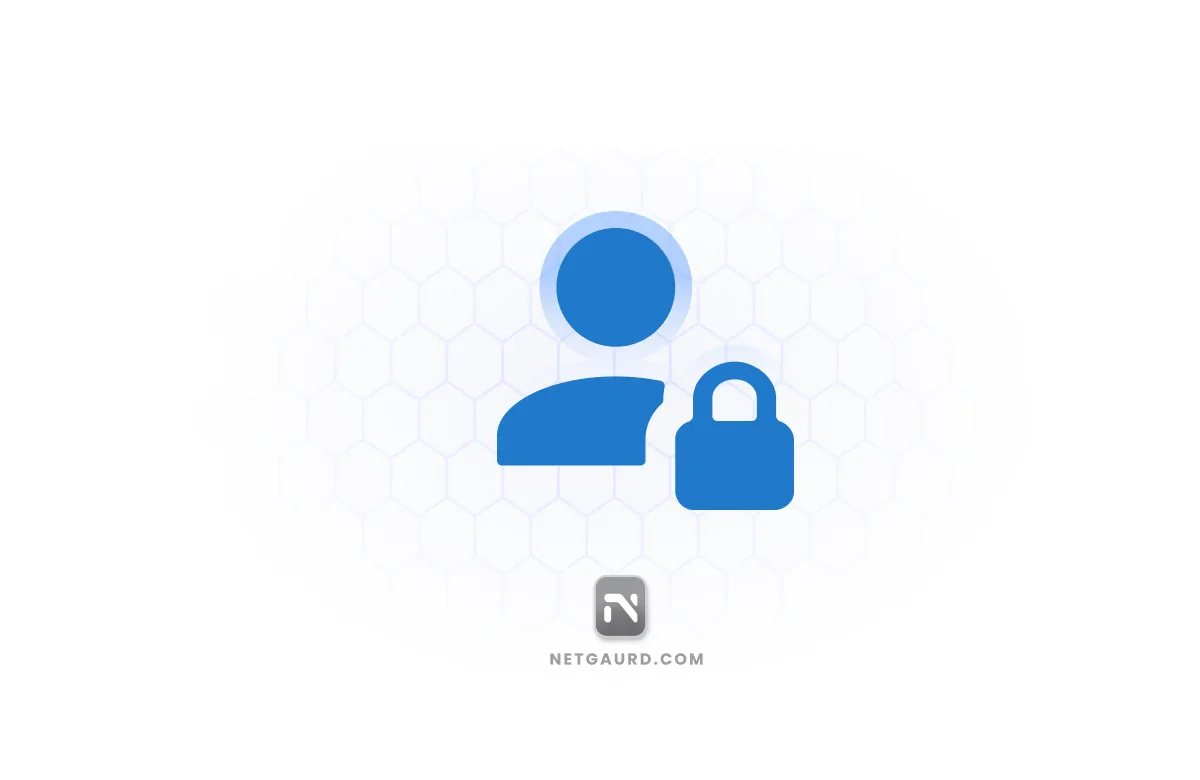Online privacy checks have become rather necessary in the digital terrain of today, not optional. Cybercriminals are always changing their strategies, thus spotting possible security flaws before they become more serious will help you avoid terrible consequences. At NetGaurd, we see how important it is to identify these risks early on and act preventatively. This all-encompassing guide will enable you to know what to search for and how to guard yourself against falling victim of cybercrime.
Table of Contents
Why Online Privacy Checks Matter in 2025
The digital footprint we leave behind grows larger every day. From social media interactions to online shopping habits, our personal information is scattered across the internet. Without regular online privacy checks, this data becomes vulnerable to exploitation by cybercriminals who are constantly refining their methods to bypass security measures.
According to a recent report by the FBI’s Cyber Division, cybercrime complaints have increased by 69% compared to previous years. This alarming statistic highlights the urgent need for proactive privacy management.
But what exactly should you be looking for when conducting an online privacy check? Let’s explore the key indicators that might suggest your digital security is at risk.
Common Signs Your Online Privacy May Be Compromised
Being able to identify when your privacy has been breached is crucial. Here are telltale signs that should trigger immediate action:
- Unexpected account activity or notifications
- Unusual emails claiming to be from services you use
- Friends receiving messages you didn’t send
- Unfamiliar charges on your credit card or bank statements
- Your passwords suddenly not working
- Sluggish device performance without explanation
- New browser extensions or programs you didn’t install
- Excessive pop-ups or redirected web searches
Have you noticed any of these warning signs recently? If so, it’s time to take your online privacy check seriously before these issues escalate into something more damaging.
The Rising Threat of Identity Theft
Identity theft remains one of the most devastating outcomes of privacy breaches. In 2024 alone, over 1.1 million Americans reported being victims of identity theft, resulting in financial losses exceeding $5.8 billion. When conducting your online privacy check, pay special attention to the security of documents containing your Social Security number, birth date, and financial information.
Remember, cybercriminals only need a small amount of personal information to begin building a profile that can be used to impersonate you online and in financial transactions.
Essential Online Privacy Check Steps Everyone Should Follow
Protecting your digital life doesn’t have to be overwhelming. Here’s a practical checklist to help you conduct a thorough online privacy check:
1. Audit Your Digital Footprint
Start by understanding what information about you is already publicly available. Google yourself regularly and check what comes up. Are there details you’d prefer to keep private? Understanding your current exposure is the first step in regaining control.
Beyond simple searches, use specialized tools like Have I Been Pwned to check if your email addresses have been compromised in data breaches.
2. Review Privacy Settings Across All Platforms
When was the last time you thoroughly reviewed your privacy settings on social media? Many platforms regularly update their privacy policies, often automatically opting users into sharing more information than necessary.
Dedicate time to review settings on each platform you use:
- Social media accounts (Facebook, Instagram, Twitter, LinkedIn)
- Google account and search history
- Shopping platforms (Amazon, eBay, etc.)
- Email providers
- Cloud storage services
- Smartphone app permissions
3. Strengthen Your Password Security
Weak password practices remain the easiest entry point for cybercriminals. Your online privacy check should include an honest assessment of your password habits.
| Weak Password Practices | Strong Password Solutions |
|---|---|
| Using the same password across multiple sites | Using a unique password for each service |
| Simple, predictable passwords (123456, password) | Complex combinations of letters, numbers, and symbols |
| Passwords containing personal information | Random combinations unrelated to personal details |
| Infrequent password changes | Regular password updates, especially after breaches |
| Written passwords in accessible locations | Using a reputable password manager |
Consider implementing a password manager like LastPass or 1Password to generate and securely store complex passwords. This single change can dramatically improve your online security posture.
4. Enable Two-Factor Authentication (2FA)
Two-factor authentication adds an essential second layer of security to your accounts. Even if a cybercriminal obtains your password, they’ll still need access to your phone or authentication app to complete the login process.
During your online privacy check, identify which of your accounts offer 2FA and enable it immediately, prioritizing financial services, email, and social media accounts.
5. Check for Outdated Software and Missing Updates
Outdated software is a vulnerability that cybercriminals actively exploit. Your devices should be configured to automatically install security updates, but it’s worth verifying this during your privacy check.
Pay special attention to:
- Operating system updates (Windows, macOS, iOS, Android)
- Web browser versions and security patches
- Antivirus software definitions
- Router firmware updates
- Smart home device software

Advanced Privacy Protection Strategies
Once you’ve covered the basics, consider these more advanced measures to further enhance your online privacy:
Using a VPN for Enhanced Privacy
A Virtual Private Network (VPN) encrypts your internet connection, making it significantly more difficult for hackers, advertisers, or even your internet service provider to track your online activities. When selecting a VPN as part of your online privacy check strategy, look for services that:
- Maintain a strict no-logs policy
- Offer strong encryption standards (AES-256 at minimum)
- Provide servers in multiple countries
- Don’t throttle connection speeds
- Include kill switch functionality to protect data if the connection drops
Remember that free VPN services often compensate for their costs by collecting and selling your data – precisely what you’re trying to avoid!
Secure Browsing Habits
Your browsing habits can significantly impact your online privacy. Consider these privacy-enhancing techniques:
- Use privacy-focused browsers like Firefox or Brave
- Install browser extensions that block trackers and scripts
- Regularly clear cookies, cache, and browsing history
- Use incognito/private browsing mode when appropriate
- Be cautious with browser extensions – they often have extensive data access
- Disable location tracking when not needed
Managing Your Data with Companies
An often overlooked aspect of an online privacy check is managing how companies use your data. Take advantage of privacy laws like GDPR (in Europe) and CCPA (in California) that give you the right to:
- Request copies of your personal data
- Ask for your data to be deleted
- Opt out of data sales to third parties
- Correct inaccurate personal information
Major tech companies like Google and Facebook have data download tools that reveal exactly what information they’ve collected about you. The results might surprise you – and motivate you to adjust your privacy settings accordingly.
Online Privacy Checks for Families
If you have children or elderly family members using the internet, your online privacy check should extend to protecting them too.
Protecting Children Online
Children face unique privacy risks online. Consider these protective measures:
- Use parental controls on devices and routers
- Regularly review privacy settings on platforms they use
- Teach age-appropriate privacy concepts
- Monitor their digital footprint (with appropriate transparency)
- Use family versions of services when available (YouTube Kids, etc.)
- Be aware of school-related data sharing policies
Helping Elderly Family Members
Older adults are frequently targeted by cybercriminals due to perceived technological inexperience. Help them by:
- Setting up secure password systems they can manage
- Installing trusted security software on their devices
- Teaching them to recognize phishing attempts
- Regularly checking their devices for suspicious activity
- Creating emergency contact protocols for suspected breaches
What to Do If You Discover a Privacy Breach
Despite your best efforts, breaches can still occur. If your online privacy check reveals signs of compromise, take these immediate steps:
- Change passwords immediately – Start with your email and financial accounts, then work through others.
- Enable additional security measures – Add two-factor authentication where available.
- Contact relevant institutions – Notify banks, credit card companies, and other financial services.
- Monitor accounts closely – Watch for unauthorized transactions or activity.
- Consider a credit freeze – This prevents new accounts from being opened in your name.
- Report the incident – File reports with relevant authorities such as the FTC at IdentityTheft.gov.
- Document everything – Keep detailed records of the breach and your response.
Remember that acting quickly can significantly reduce the damage from privacy breaches.
Creating a Regular Online Privacy Check Schedule
Privacy protection isn’t a one-time effort. Create a schedule for regular privacy audits:
- Monthly checks: Review account activity, update passwords for critical accounts, check for software updates
- Quarterly checks: Conduct a more thorough review of privacy settings across platforms, delete unused accounts, check credit reports
- Annual checks: Complete digital footprint audit, review and update your overall privacy strategy, check data broker sites
Set calendar reminders or use a privacy-focused app to help maintain this schedule.
The Future of Online Privacy Protection
As technology evolves, so do the challenges and solutions for online privacy. Stay informed about emerging trends that might affect your online privacy check process:
- Artificial intelligence and machine learning in privacy protection
- Biometric security measures and their privacy implications
- Evolving privacy legislation around the world
- Blockchain and decentralized identity management
- Privacy-focused alternatives to mainstream services
Frequently Asked Questions About Online Privacy Checks
How often should I perform an online privacy check?
For basic security, conduct monthly quick checks and quarterly deep reviews of your privacy settings and digital presence. However, if you engage in high-risk online activities or manage sensitive information, consider increasing the frequency to weekly basic checks.
What’s the single most important step in an online privacy check?
While all steps matter, securing your email account is paramount since it’s typically the recovery point for other accounts. Implement strong password practices and two-factor authentication for your email as an absolute minimum.
Can I ever be completely private online?
Complete online privacy is extremely difficult to achieve while maintaining normal digital activities. The goal should be reasonable privacy through informed choices and security practices rather than perfect anonymity, which would require significant lifestyle changes.
Are paid privacy tools worth the investment?
Quality paid tools like premium VPNs, password managers, and security suites often provide superior protection compared to free alternatives. Consider them an investment in your digital safety, especially if you handle sensitive personal or financial information online.
How do I explain online privacy to non-technical family members?
Frame online privacy in real-world terms they understand. Compare passwords to house keys, privacy settings to window blinds, and data sharing to conversations in public places. Focus on practical actions rather than technical concepts.
Conclusion: Taking Control of Your Digital Privacy
Conducting regular online privacy checks is no longer optional in our connected world—it’s a necessity. The digital landscape continues to evolve, bringing new conveniences alongside new risks. By implementing the strategies outlined in this guide, you’re taking proactive steps to protect yourself, your family, and your data from increasingly sophisticated cyber threats.
Remember that perfect security doesn’t exist, but informed vigilance dramatically reduces your risk. Start with the basics: strong passwords, two-factor authentication, and regular software updates. Then gradually implement more advanced measures as you become comfortable with the process.
Have you conducted an online privacy check recently? We’d love to hear about your experiences and any additional tips you might have for our community. Please share your thoughts in the comments below!
For more information on protecting your digital life, explore our other articles on NetGaurd. Together, we can build a safer digital experience for everyone.

